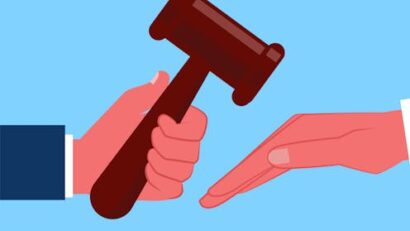Ryssland åtalar australier som stred för Ukraina
En australisk medborgare som stred för Ukraina i det ryska invasionskriget ställs inför domstol i de av Ryssland… Läs mer…
Nyheter och länkar - en bra startsida helt enkelt |Oculus lyx vitae
En australisk medborgare som stred för Ukraina i det ryska invasionskriget ställs inför domstol i de av Ryssland… Läs mer…
Politiet har fått melding om paragliderulykke. Brannvesen og ambulanse er på stedet. Redningshelikopter er på vei for å løfte ut pasient, melder politiet. De skriver at det er krevende terreng da det er steinur i området. På nåværende tidspunkt er det ukjent skadegrad på pasient. Läs mer…
Klokken 18.15 opplyser politiet at den tyske kvinnen som har vært savnet i Vrådal siden torsdag morgen er funnet i god fysisk form.
Hun ble funnet av publikum og blir etter hvert sjekket av helsepersonell og kjørt tilbake til de pårørende.
Politiet takker alle som har bistått i aksjonen. Läs mer…
Tre Kronor förlorade dagens returmöte med Finland med 2–0 i Frölundaborg. – Det är underkänt, säger SVT:s expert Håkan Loob om det svenska spelet i powerplay. Läs mer…
Flere tusen pilegrimer sluttet seg til den tradisjonelle korsvandringen i Jesu fotspor, langs via Dolorosa, langfredag.
I årene før krigen på Gazastripen deltok titusener jevnlig i korsvandringen, som markerer betydelige hendelser den siste dagen Jesus levde. Etter det Hamas-ledede angrepet på Israel 7. oktober 2023 og den påfølgende Gaza-krigen, har imidlertid antall utenlandske pilegrimer falt betraktelig.
Ifølge en DPA-journalist på stedet var det flere som møtte opp i år enn i fjor, med flere deltakere fra utlandet og mange kristne arabere fra Jerusalem.
(NTB) Läs mer…
Libanons helsemyndigheter sier fredag at en person ble drept i et israelsk angrep sør i landet
Det er fjerde dag på rad med israelske angrep sør i landet, til tross for at det ble inngått en våpenhvileavtale i slutten av november.
Den israelske militærledelsen sier de har drept et Hizbollah-medlem, i et presisjonsangrep, i det aktuelle området. Den drepte skal blant annet ha vært ansvarlig for utrullingen av Hizbollahs kommunikasjonssystemer i hele Libanon, ifølge dem.
Hizbollah insisterer på at de holder seg til våpenhvileavtalen fra november, til tross for Israels vedvarende angrep.
(NTB) Läs mer…
En man som orsakade en explosion när han skulle fritera chili cheese har dömts till dagsböter för allmänfarlig… Läs mer…

’You just didn’t mess around with federal judges,’ says a former federal judge. ’It was a good way to get Läs mer…